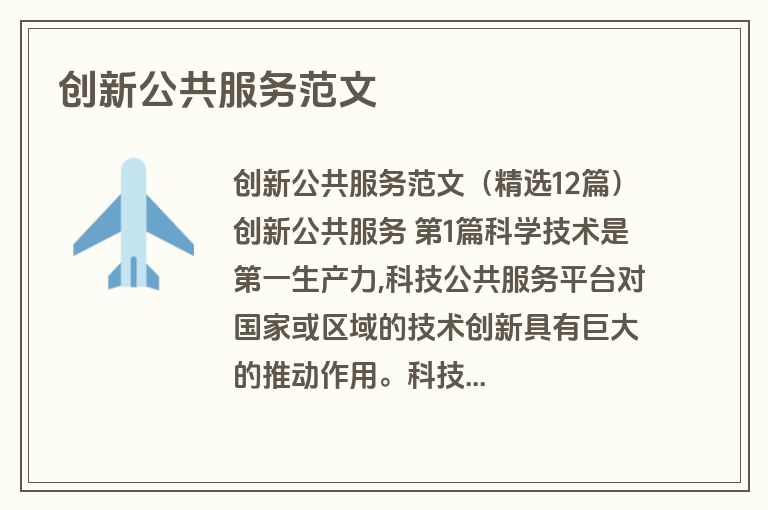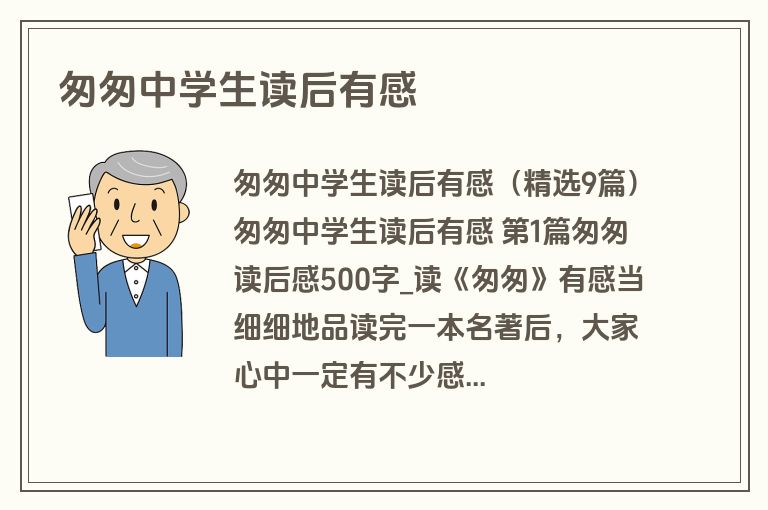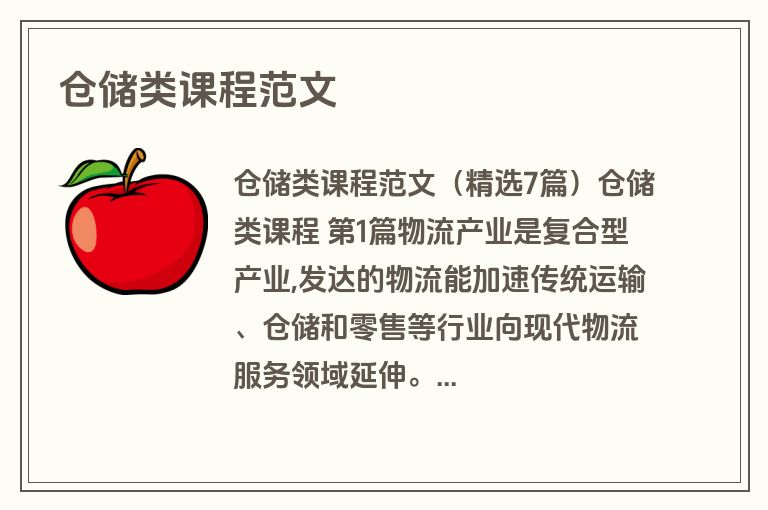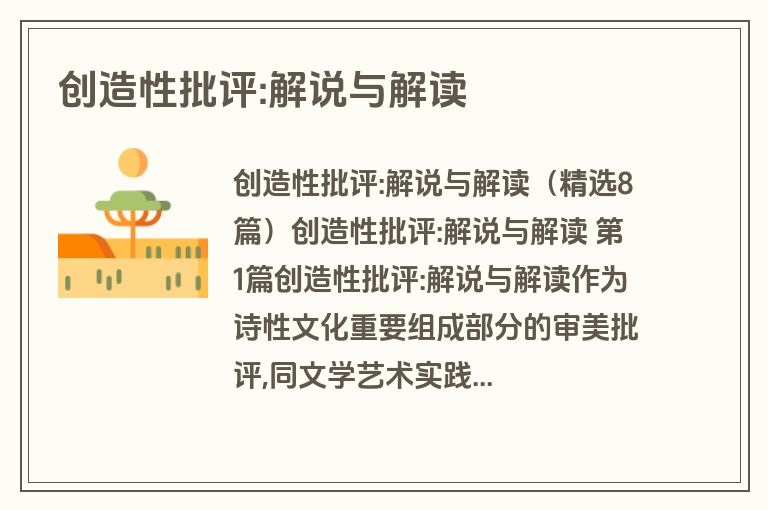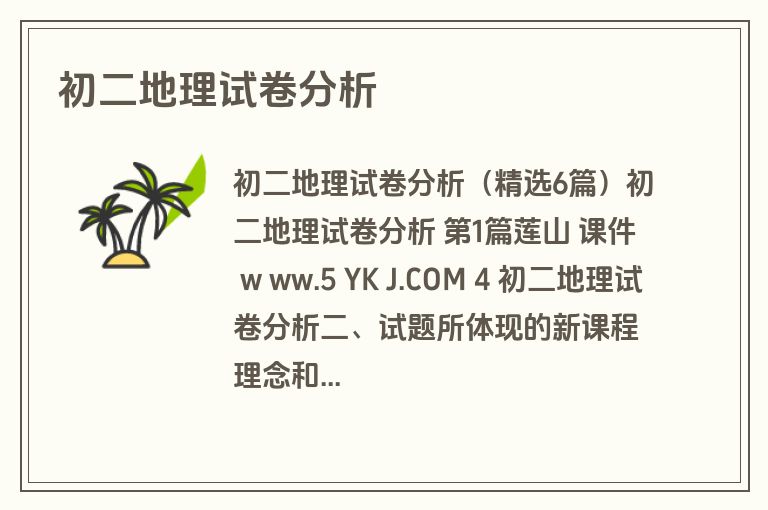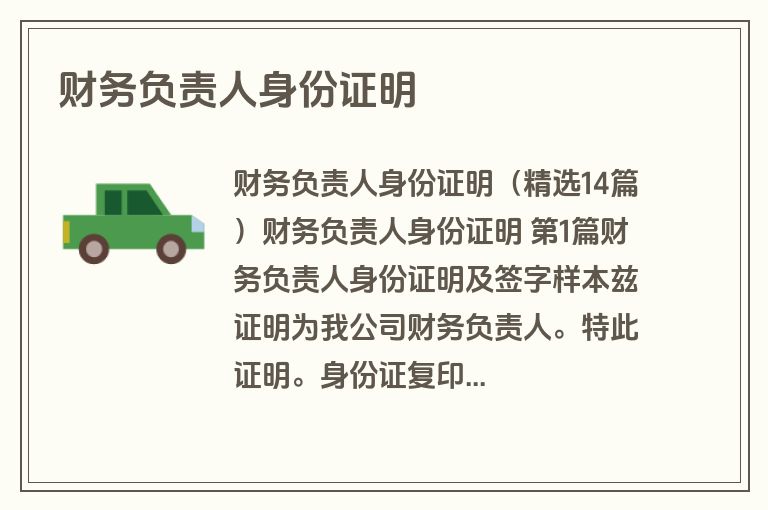北京鲁迅博物馆旅游导游词(精选6篇)
北京鲁迅博物馆旅游导游词 第1篇
各位旅客朋友们:
大家好!
鲁迅博物馆主要担负着鲁迅遗著遗物的征集与保管、鲁迅研究与研究生培训、鲁 迅文化的宣传与展示等任务。有资料显示,该馆馆藏文物、图书等藏品97602余件。其中,既有鲁迅的大量手稿、生平史料、藏书、藏画、藏碑拓片、藏古代文物、藏友人信札等文物藏品,又有许广平、周作人、周建人、章太炎、钱玄同、许寿裳、江绍原、魏建功、瞿秋白、冯雪峰、萧军、萧红、叶紫、柔石、冯铿等人的遗物。还有大量的鲁迅著、译、辑、编著作版本和鲁迅研究著作版本、现代文学丛刊与新旧期刊,还有不同时代的艺术家的艺术品等等。这些珍贵的藏品,经过几代保管人员的辛勤努力,不仅保存完好,并且还建立了数据库进行了信息化管理。
北京鲁迅旧居位于北京鲁迅博物馆内,现为全国重点文物保护单位。1920xx年5月至1920xx年8月,鲁迅在此居住。鲁迅在这里完成了他的《华盖集》《华盖集续编》《野草》等文集和《彷徨》《坟》《朝花夕拾》中的部分文章。 北京鲁迅博物馆主要担负着鲁迅遗著遗物的征集与保管、鲁迅研究与研究生培训、鲁迅文化的宣传与展示等任务;发展目标和方向是逐步成为以“三个中心一个园地”为理念的学习型博物馆,成为全国的鲁迅文物资料收藏中心、鲁迅文化遗产展示中心、鲁迅文化遗产研究中心和当代作家活动园地。 北京鲁迅博物馆的馆藏文物、图书等藏品7万余件。其中,有鲁迅的手稿、生平史料、藏书、藏画、藏碑拓片、藏友人信札等文物藏品;有许广平、周作人、周建人、章太炎、钱玄同、许寿裳、胡风、江绍原、魏建功、瞿秋白、冯雪峰、萧军、萧红、叶紫、柔石、冯铿等人的遗物;还有大量中外版画的名家名作,以及吴冠中、李可染、蒋兆和等一批大师级的作品。 馆内的鲁迅研究室,是经毛主席和党中央批准,于1976年2月成立的。北京鲁迅博物馆出版的《鲁迅研究月刊》以其独特的思想性、学术性,得到学术界好评,一直是全国社会科学核心期刊,转载量和引用率名列前茅。
鲁迅博物馆历史介绍导游词
各位旅客朋友们:
大家好!
位于鲁迅博物馆院内的鲁迅故居(原为北京市阜成门内西三条21号),是鲁迅先生1920xx年12月购买、1920xx年春天亲自设计改建的一座四合院,1920xx年5月至1920xx年8月鲁迅在此居住,是鲁迅在北京生活的最后一处住所。北京鲁迅博物馆正是在这个鲁迅故居的基础上发展起来的。
1936年10月19日,鲁迅逝世。1936年10月22日,《中国共产党中央委员会、中华苏维埃人民共和国政府为追悼鲁迅先生告全国同胞和全世界人士书》中,提出建立各种纪念设施。第一次明确提出建立鲁迅博物馆的是郭沫若,他在1945年10月19日《新华日报》上发表的《我建议》一文中说:“我建议:应该设立鲁迅博物馆。凡是关于鲁迅的资料,他的生活历史,日常生活状态,读的书,著的书,原稿,译稿,笔记,日记,书简,照片,等等;还有关于他的研究,无论本国的或外国的;都专门蒐集起来,分门别类地陈列。让研究鲁迅者,让景仰鲁迅者的人民大众得以瞻仰。这博物馆可建立于上海,北平,广州。资料可以分别陈列,不能分割的可用照片。……”当天,又有胡乔木、何其芳、戈宝权、司徒慧敏等11人写信给鲁迅先生纪念委员会表示赞同,但在国民党统治下,此建议未能实现。1947年6月,鲁迅原配夫人朱安病故,当鲁迅故居面临国民党劫收的危难之时,王冶秋、徐盈、刘清扬、吴立恒等人通过北平地方法院以“查封”的方式,将这座故居保护下来。
1949年1月北平解放,军管会文化接管委员会文物部王冶秋等同志立即派人查 看鲁迅故居,并开始了恢复故居原貌的工作。9月20日,北京市人民政府安排矫庸、李育华两位同志负责看管鲁迅故居,并在许广平的指导下,依照鲁迅生前居住的情况进行了布置。10月19日——解放后第一年的鲁迅逝世纪念日,故居开放一天,接待各界观众参观、瞻仰。
1950年3月,许广平将鲁迅故居及故居内的文物全部捐献给人民政府;文化部文物局从北京市人民政府接管了鲁迅故居;6月,文化部文物局派人将故居内文物清点完毕并报文化部。11月6日,文物局从上海鲁迅故居将鲁迅迅藏书装41箱运往北京,在北京鲁迅故居存放。文化部文物局接管鲁迅故居后,在保持故居原样的基础上,对故居进行了测绘和修缮,并于9月初竣工;10月19日鲁迅逝世14周年纪念日,首都文化界举行隆重纪念会,鲁迅故居开放供群众参观。此后每年10月开放一次,时间在1个月左右(1954年以后,每周开放2至3天),这种情况一直延续到1956年博物馆建成。
1951年初,王冶秋同志打报告请毛泽东主席为鲁迅故居题名,毛主席在报告上批:请郭老写。后来,郭沫若同志亲笔题写了“鲁迅故居”4个字,镶嵌在鲁迅故居大门右侧墙上。
1954年初,文化部决定在鲁迅故居东侧筹建鲁迅博物馆。1955年9月,文化部召开会议审定建馆设计方案;12月,开始施工。1956年10月19日新馆建成及鲁迅生平展陈列正式对外开放。
1958年底,鲁迅博物馆改归北京市领导。不久又下放归西城区领导。
1961年8月,鲁迅博物馆重新归北京市文化局领导。
1976年元旦起,鲁迅博物馆回归国务院国家文物事业管理局直接领导。
1978年,在鲁迅诞辰100周年前夕,鲁迅博物馆开始第2次扩建,1981年8月竣工,修改后的鲁迅生平展9月开放。
1979年8月21日,鲁迅故居被北京市公布为重点文物保护单位。
1980年3月14日,叶剑英同志为北京鲁迅博物馆题写馆名。
1993年5月24日,鲁迅博物馆新展厅工程破土动工,至1994年9月竣工。1995年11月,新展厅基本陈列《鲁迅生平展览》开始布陈,9月布陈完毕。该展览荣获全国“十大陈列展览精品”奖。
20xx年3月,鲁迅生平展进行改陈招标、论证工作。
北京鲁迅博物馆旅游导游词 第2篇
身体好才是真的好,据官方统计北京人平均寿命已经达到了80岁,改革开放前是60岁,为什么?生活水平提高了,中国社会在发展,北京在发展,以前只有皇帝可以吃的,现在普通百姓也能吃上宫廷风味,以前皇帝可以穿的丝绸,现在普通百姓也可以购买到了,以前皇帝带的玉石,对身体好,我们现在也一样可以购买到,有三百多年历史的同仁堂的药材以前专供皇室享用,尤其是慈禧西太后,常年服用同仁堂的乌鸡白凤丸,现在我们也一样可以买得到,还有皇家专用的景泰蓝观赏品都可以买得到,简单地说皇家吃的穿的玩的对身体好的,我们现在都可以办得到了,除了皇上的后宫佳丽三千,这么多女人我们是办不到的。我们来到北京旅游,如果自己需要用到这些东西,或者作为礼物送给亲朋好友都是非常有face的,可以支持北京旅游业发展,也可以提高自己生活品味。说到品味,男人分6等,一等男人家外有家,二等男人家外有花,三等男人花中寻家,四等男人下班回家,五等男人下班回家老婆不在家,六等男人下班回家老婆身边有个他。女人可以分4等,一等美女漂洋过海,二等美女深圳珠海,三等美女北京上海,四等美女在家等待。
那么我们北京平时怎么称呼美女的呢?年龄比你大的叫姐,老年的叫大妈,年龄比你小的叫姑娘。称呼男性一般都叫哥,老年的叫大爷。小孩统称小朋友。但是纯北京人,也就是老北京,管姑娘不叫姑娘,叫小妞儿。管美女不叫美女,叫蜜儿。管他不叫他,叫丫。管你不叫你,叫您内。管女人不叫女人,叫娘们儿。管男人不叫男人,叫爷们儿。管朋友不叫朋友,叫瓷器。管情人不叫情人,叫傍尖儿。管小女孩不叫小女孩,叫丫头片子。
这是北京的称呼,天津的称呼更特别,比如说:有喊姐姐的,没有喊妹妹的,反正无论你多大,哪怕只有十几岁,也可能会有50或60岁的人称呼你姐姐,而不是妹妹。有喊大哥的,没有喊兄弟或老弟的,即使是上了年纪的奶奶也会称呼20几岁的小伙子为大哥,但不会称呼兄弟的。有喊伯伯(bai)的,却没有喊叔叔的,就是说不管你的父亲在家排行第几,你都要称呼他其他的兄弟为伯伯,父亲的弟弟也不叫叔叔。总之,基本都是往大了喊,这就是天津的称呼,天津被称为北京的后花园,节假日北京人也会开着车去那里度假。天津离北京一百多公里,全程高速也就二个多小时能到天津,如果我们有时间的话花很少的`车费就可以顺便多玩一个城市。
工业旅游:北京离曼城有多远? 第3篇
2010年12月, 首钢最后400万吨钢铁正式停产。这座1964年12月投产、曾被誉为“拥有世界上转得最快的转炉”的炼钢厂, 光荣地完成了历史使命。首钢位于石景山区的工业园将以“工业遗产博物馆”的规划成为北京市政府重点关注的旅游项目。
什么是工业旅游
顾名思义, 工业旅游是一种将旅游与工业联系起来的旅游形态。
按存在“时态”对工业旅游进行划分, 是一种更有趣并易于理解的方式。
一种是工业过去时, 即以有历史感的废弃工业区为主题, 将工业旅游与城市空间转型、工业遗产保护、工业资源再利用相结合。在这种保护性开发的模式下, 特定时代特定地区的城市工业符号转变为创意文化符号, 并产生出独特的城市空间美学。典型代表有北京798, 上海8号桥、1933老场坊, 辽宁海州露天煤矿国家矿山公园等。
一种是工业进行时, 即依托运营中的企业、工程等, 开展参观、游览、体验、购物等活动。这种开放体验式的模式, 将生产过程变成了“展品”, 在满足游客好奇心的同时, 也巧妙地实现了企业的品牌传播, 如北京的现代汽车、上海的宝钢、大众汽车等。
在第四届中国北京国际文化创意产业博览会上, 工业旅游则在这两大类型基础上被细分为七类, 分别是:都市工业类、现代制造业类、工艺美术类、高技术类、工业遗存开发利用类、循环经济类和老字号类。
工业旅游:革新与怀旧的“二重奏”
工业旅游最早出现在欧美的一些早期工业化国家, 大约起步于上个世纪五六十年代。从这些国家的发展路径来看, 工业旅游率先从保护和利用工业遗产中得到了发展。
英国是世界上最早开展工业遗产旅游的国家, 其中最有名的是铁桥峡谷。铁桥峡谷于16世纪晚期开始开发, 煤炭工业为其支柱产业, 19世纪下半叶这里开始衰落。英国政府于20世纪60年代开始对其进行遗产保护并着手开发工业遗产旅游。1986年, 铁桥峡谷被联合国教科文组织列入“世界自然和文化遗产名录”, 成为世界上第一个因工业而闻名的世界遗产。
另一个经典案例当属德国鲁尔区。20世纪60年代初, 鲁尔区制造业的国际竞争力持续下降, 工厂纷纷破产、倒闭或外迁, 由此带来许多社会问题。当地政府采取积极措施, 充分利用大量废弃的工矿、旧设备和工业空置建筑, 将工业文化遗产与旅游开发、区域振兴等相结合。1999年, 鲁尔区制定了一条区域性旅游规划, 将全区主要的传统工业旅游景点整合为著名的“工业遗产旅游之路”, 在这条线路上, 旅游者可以游览19个最能代表该地区煤炭和钢铁工业历史的地方。
旅游者, 明天的消费者
我国真正意义上的工业旅游出现于20世纪90年代中期。1994年, 长春一汽集团组建了一汽实业旅行社, 对社会开放了卡车生产线、红旗轿车生产线、捷达轿车生产线及汽车研究所样车陈列室。此后, 一些知名企业和北京、上海、广东等地区也纷纷开始涉足工业旅游。
工业旅游的发展, 既为丰富优化我国旅游产品、延长产业链条开辟了广阔空间, 又为促进经济结构调整、增加社会就业、提升企业形象注入了新活力。2001年, 国家旅游局正式启动工业旅游项目。2004年7月, 国家旅游局正式命名103家全国工业旅游示范点, 标志着工业旅游在我国正式进入市场化运作阶段。作为一种深度特色旅游, 工业旅游的发展趋势值得期待。
曼彻斯特的成功运营模式
在世界上第一台纺织机的出产地曼彻斯特, 其典型的工业旅游经营方式正得到世界旅游爱好者的普遍关注。曼彻斯特科学与工业博物馆 (以下简称“MOSI”) 是英国著名的工业遗产游景点。
MOSI最有特点的是其场馆建设。MOSI虽然外表朴素, 但是馆内展品和服务却大有文章, 各种主题和多种手段让人们充分了解了世界工业革命和产业革命的历程和成果。从2009年到2010年, MOSI的访问人数达到74.5万人。
如今, MOSI周边已经成为曼彻斯特地区的创意产业集散地, 年经济附加值总量达到470亿英镑, 几乎是英国西北部地区总生产税收的50%。在MOSI内, 礼品店、餐饮店、导游服务、会议及接待服务设施一应俱全, 同时, MOSI的线上购物模式非常成熟。MOSI附近林立的写字楼、购物中心和时尚广场, 已逐步构成了曼彻斯特的核心经济地带。
此外, MOSI致力于加强与参观者的沟通和发展建设网站。与其他博物馆和艺术馆之间建立友好合作关系, 邀请媒体参与报道各种会展新闻。对工程和科技相关学科的大学生提供奖学金, 将MOSI的社会价值提升到新高度。
首钢工业园要打造超越CBD (中央商务区) 的新商圈
北京市政府计划将首钢打造成为人们体验和追忆过去的工业旅游文化场所。首钢工业旅游办公室的工作人员表示, 首钢工业遗产路线一旦成熟, 有可能真正帮助衰退中的老工业区在从“工业经济”到“体验经济”的转型中获得再生。首钢工业园2010年接待游客近10万人。
已连续四年参加文博会的退休工人谈女士在参观完首钢工业园后表示, 看到惟一还在正常运营的高炉, 心情格外澎湃, 亲眼见证了上世纪中国改革开放的那段开拓创新的时光。但她也表示, 首钢作为一个尚未完全成熟的旅游产品, 路线设置缺乏吸引力。
如何让工业游更加吸引年轻人?北京市经信委的工作人员表示:“政府希望将首钢工业园区打造成超越CBD的新商圈, 时尚广场和酒吧街都在规划之列。”
据悉, 首钢改造工程已经进入“地下工作”阶段, 目前尚未有成熟区域进行动土改造工程, 只是先行实验, 打造宜居的博物馆风格。
北京户外旅游推荐 第4篇
垂钓佳所:白龙潭
地处燕山脚下的白龙潭景区,距北京市中心一百公里,因汉世传说得名。白龙潭风景区内山水相映,松柏林立,溪水潺潺,妙趣横生。周末假日,或登山或垂钓,身处于如画卷般旖旎风景之中,与山为幕与水为帘,比起一般垂钓园,更是别有一番滋味在其中。
交通:东四十条游12路(42路总站)发车直达,或从东直门外乘长途汽车到密云白龙潭站下车;驾车可走京密路到密云,再沿京承路行25公里见路标右转即到。
票价:20元(团体八折儿童学生半价)
旅行社团体:含门票+餐厅用餐+垂钓+保险+导游=70/人(车:小龙1300 中龙1500)
联系电话:51985661
攀岩妙地:百望山、凤凰岭岩壁、青龙峡
对于攀岩爱好者来说,能有一处崎岖壁岩供其攀登便是其最大的希望,而北京恰恰有这样的场所供不同的人选择。百望山的攀岩地点设在山北部,高度为16.8米,同时为了适应不同级别的攀岩爱好者,还开设了12条初、中、高不同级别的岩道。凤凰岭则为天然岩壁,高度从10米到100米不同,可根据个人水平自由选择。青龙峡景区以风景优美著称,山崖低矮,适合初学者小试身手。
百望山
公交:颐和园北宫门乘330路到黑山北口站下车。
凤凰岭
公交:346路公共汽车凤凰岭(西山农场)下车或骑自行车或自驾车
青龙峡
公交:宣武门或东大桥乘游16路直达,或东直门乘916路到怀柔,换乘驶往雁栖湖方向的公共汽车到河防口下车。
自驾:由三元桥沿京密路到怀柔县城,顺怀丰公路北行20公里即到。
激流勇进:白河湾、京北第一漂
9月正值夏末秋初的季节,还没真正进入秋高气爽的时节,假若在炎热的时候在河流中感受激情也未尝不是一件美食。白河湾漂流全长5公里,起点水流平缓而随着几个急弯和险滩之后,让人立刻感受到了那种速度与刺激并在的感受。而享誉盛名的京北第一漂实际与白河湾为一系之源,作为开发最早的漂流地点之一,却比上流白河湾显得略微平稳一些,更适合初接触漂流的旅游者。
白河湾
自驾:由“京密路”或“京承路”至怀柔开放环岛,继续向丰宁方向行驶,沿“怀丰公路”(111国道)行驶约45公里到达前安岭村,在前安岭隧道前右转3公里即到青石岭村。
公交:从东直门乘坐916路公交车到怀柔汽车站转乘汤河口方向中巴车到前安岭站。
价格:120元/张(含5公里漂流、皮艇、皮筏、救生衣、越野车接回起点)
京北第一漂
自驾:自驾车由怀柔城区沿“怀丰公路”(111国道)行驶45公里到前安岭村,向右至青石岭村3公里即到。
公交:1、东直门直接乘936路到柏查子村,再坐小公共汽车10分钟即到
2、东直门长途汽车站乘916路到怀柔汽车站转乘中巴可直达
北京旅游导游词 第5篇
在金水桥前面,左右各有一个石狮子。左边的是雄师,右边的是雌狮。我们是如何分出雌雄的呢?因为雄师脚踩的是绣球,而雌狮则是幼狮。现在为了保护文物,这对狮子已经被围栏保护起来了。在天安门前后各有一对华表,其实华表的原名叫做诽木,是皇帝为了表示自己能够采纳意见和接受意见而设立的,逐渐演变成了今天的华表。它的顶端的异兽叫做吼,北华表上的叫做望君出,意思是为了让皇帝出宫体察民情,而南端的则叫望君归,意思是皇帝不要留恋宫外的花花世界,应该及时回宫处理政务。
现在请大家向后转,在我们身后,就是天安门广场。在明清时候,这里是成T字型的,中间是南北走向的御路,在御路两侧,建有千步廊,两边都有廊房110间,到了长安街南侧,在随着红墙向东西两侧延伸,有廊房34间,所以千步廊共有228间廊房。而在御路的最南端明代时是大明门,清朝则改为大清门;东西两侧的门分别是长安左门和长安右门,也分别称为龙门和虎门,因为在科考之后,黄榜在长安左门公布,考中的进士要从这里进入皇城,所以称之为龙门,而虎门的来由则是每年霜降以后,朝廷都要对犯人进行审查,而审定的犯人则被带出长安右门,等于落入虎口,所以称为虎门。而订立这些,都是与五行有关。
北京旅游英文导游词 第6篇
Ladies and Gentlemen: Welcome to the Summer Palace.
(After the self-introduction of the guide -interpreter) I hope this will be an interesting and enjoyable day for you .
During our tour, you will be introduced to time honored historical and cultural traditions, as well as picturesque views and landscapes.
The construction of the Summer Palace first started in 1750.
At that time, the Qing Dynasty was in its heyday and China was a powerful Asian country with vast territories.
The monarch in power then was Emperor Qianlong.
With supreme power and large sums of money, he summoned skillful and ingenious artisans from all over the country to carry out this construction work in honor of his mother `s birthday.
After 15 years and one seventh of the nation` s annual revenue spent, the Garden of Clear Ripples was completed and served as a testimony to China` s scientific and technological achievements.
In 1860, this vast royal garden was burnt down along with the Yuanming Yuan (Garden of Perfection and Brightness) by Angol-French allied forces.
In 1888, Empress Dowager Cixi reconstructed the garden on the same site and renamed it the Garden of Nurtured Harmony (Summer Palace).
Characterized by its vast scope and rich cultural embodiments, the Summer Palace has become one of the most famous tourist sites in the world.
This is the main entrance to the Summer Palace-the East Gate On top of the eaves of the door there is a plaque bearing a Chinese inscription which means “Garden of Nurtured Harmony” , whose calligrapher was Emperor Guangxu.
The gate that you are now entering was used exclusively by the emperor, the empress and the queer mother.
All others used the side doors.
(Inside the East Gate)
the Summer Palace can be divided into two parts: Longevity Hill and Kunming Lake .The whole garden covers an area of 290 hectares, of whih three- fourths consists of a lake and rivers .This imperial garden features 3,000 room-units and covers an expanse of 70,000 square meters with more than 100 picturesque spots of interest.
The layout of the Summer Palace includes three groups of architectures: palaces where the emperor attended to state affairs, resting palaces of the emperor and empress, and sightseeing areas.
Entering the East Gate we will come the the office quarters.
Entering the East gate we will come to the office quarters.
The annex halls on both sides were used for officials on duty.
This is the Gate of Benevolence and Longevity.
Above the door there is a plaque bearing the same name in both Chinese and Manchurian characters.
The gigantic rock in the foreground is known as Taihu rock, or eroded limestone, quarried in Jiangsu Province and placed here to decorated the garden.
On the marble terrace sits a bronze mythical beast, known as Qilin or Xuanni .
It was said to the one of the nine sons of Dragon King.
A point of peculiar interest is that it has the head of a dragon, antlers of a deer, the tail of a lion and hooves of a ox, and is covered with a unique skin.
IT was considered an auspicious creature that brought peace and prosperity.
This grand hall is the Hall of Benevolence and Longevity.
It was built in 1750 , and was known as the Hall of Industrious Government.
Emperor Qianlong ruled that the halls where monarchs attended to state affairs would be named after them .
After the rebuilding of the Summer Palace, the hall was renamed, suggesting that benevolent rulers would enjoy long lives.
The arrangement of the hall has been left untouched.
In the middle of the hall stands a throne made of sandalwood and carved with beautiful designs.
In the background there is a screen carved with nine frolicking dragons.
On either side of the throne there are two big fans made of peacock feathers, two column-shaped incense burners, crane-shaped lanterns and an incense burner assuming the form of Luduan, a mythological animal which was suppose to have the power to prevent fire.
The small chambers on eight side were where the Emperor Qianlong and Empress Dowager Cixi rested and met officials on formal occasions.
On the verandah in the foreground of the hall there are bronze statues of dragon and phoenixes which served as incense burners on major occasions.
They are hollow and smoke comes through holes on their backs.
Also on the veranda are Tai Ping (Peace) bronze water vats made during the reign of Emperor Qianlong.
As a precaution in case of fire, a fire was lit underneath the vats in the winter to keep the water in them from freezing.
(At the entrance of Garden of Virtuous Harmony)
we are now visiting the Garden of Virtuous Harmony, where Emperor Qianlong and Empress Dowager Cixi were entertained with Beijing Opera performances.
IT mainly consists of the Dressing House, The Grand Theater Building and the Hall of pleasure smiles.
The grand Theater Building known as the “Cradle of Beijing Opera” was uniquely laid out and magnificently decorated.
On September 10, 1984, the Garden of Virtuous Harmony opened its doors to visitors.
There are also 7 exhibition halls with articles of daily use on display here.
The staff here put up court dresses of Qing Dynasty in order to give the visitor a more vivid impression.
(In front of the Grand Theater Building)
this building is 21 meters in height and 17 meters in width and features three tiers of tilted eaves and stages.
All of the stages are connected to a raise ,and a winch is installed at the top.
A well and 5 ponds were sunk under the ground stage.
There are trapdoors in the ceiling for fairies to descend, as well as on the floor for demons to surface.
The underground passages also served as a means of improving resonance and making the performers` voices more audible .Of the three main theater building of the Qing Dynasty, the Grand Theater Building is the tallest and the largest.
The other two are Changyin (Fluent Voice ) Pavilion in Chengde, an imperial summer resort.
The building played a major part in fostering the birth and development of Beijing opera: since the completion of the Grand Theater Building, many performances were held in it in honor of the Empress Dowager Cixi.
(A lakeside walk from the Garden of Virtuous Harmony to the Hall of Jade Ripples)
we are now standing in the middle of a rockery behind the Hall of Benevolent and longevity.
It appears that there` s nothing special ahead.
However, after we clear the rockery, we will reach Kunming Lake.
This is a application of a specific style of Chinese gardening.
Not far away in the lake there is a islet.
It is filled with peach and weeping willow trees and serves as a ideal place to appreciate the scenery.
The pavilion on the islet is called Zhichun (Understanding Spring) Pavilion and is chardcterized by four- edged, multiple eaved roofs.
(In front of the Hall of Jade Ripples)
this group of special and quiet courtyard dwelling is the Hall of jade Ripples.
It was first used by Emperor Qianlong to attend to state affairs.
IT was also where Emperor Guangxu of the late Qing dynasty was kept under house arrest.
This hall is a hallmark of the Reform Movement of 1898, Emperor Guanxu was Empress Dowager Cixi` s nephew.
After Emperor Tongzhi died, Empress Dowager Cixi made her nephew, who was at that time four years old a successor in order to continue her wielding of power behind the scenes.
When Emperor Guanxu was 19 years old ,Empress Dowager Cixi relinquished power to him but continued to exert considerable influence.
In 1898, the Reform Movement took place with the aim of sustaining the corn principles of the Qing Dynasty while reforming outdated laws.
The movement lasted for 103 days until it was suppressed by Empress Dowager Cixi.
The emperor` s six earnest reformists were beheaded and Emperor Guangxu was placed under house arrest which lasted for 10 years .All the back doors were sealed and a brick was was put up behind the wooden partition on each side of the two annexes of the courtyard.
Emperor Guangxu was closely watched by eunuchs.
The wall remains intact for tourists to see..
Dynasty while reforming outdated laws.
The movement lasted for 103 days until it was suppressed by Empress Dowager Cixi.
The emperor` s six earnest reformists were beheaded and Emperor Guangxu was placed under house arrest which lasted for 10 years .All the back doors were sealed and a brick was was put up behind the wooden partition on each side of the two annexes of the courtyard.
Emperor Guangxu was closely watched by eunuchs.
The wall remains intact for tourists to see.
(In front of Yiyunguan (Chamber of Mortal Beings)
this was where Empress and empress dowager of China` s feudal system.
However, Emperor Guanxu was not the last emperor of the Qing Dynasty.
The last in the line was Emperor Puyi, who ascended the throne in 1908 at the age of three, too young to be married .
In 1912, he was forced to abdicate.
During the short reign of Emperor Puyi.
Empress Longyu handled state affairs on his behalf in the name of Empress Dowager.
In 1911, a revolution led by Dr.
Sun Yat-sun succeeded, and the year after, Empress Longyu announced the abdication of the last emperor of China.
(In the Hall of Happiness and Longevity)
the aged empress Dowager Cixi was so fond of the Summer Palace that she decided to live here from April through October of every year.
This group of buildings served as her residence.
This group of courtyard dwellings consists of a forecourt and a backyard with annex courts on each side .The whole compound was basically made of wood, which is ideal for ventilation and lighting .
With its quiet and tasteful layout, the Hall of Happiness and Longevity made life very easy and convenient.
No wonder one of Empress Dowager Cixi` s pleasure boat.
On the pier there is a tall lantern post.
Flanking the staircase leading to the main entrance of the hall, there are bronze cranes, deer and vases, symbolizing universal peace.
The interior layout is the same as the imperial court, with throne, a large table and incense burners placed in the middle.
At mealtime, eunuchs-in –waiting would make a gigantic table out of this table and Empress Dowager Cixi would dine on 128 courses.
Because of this more than 1,800 tales of silver would be spent each month on meals.
On the east side of the Living Room is the Cloak Room.
The bedroom in on its west.
In front of the yaoyue (Inviting the Moon ) Gate of the Long Corridor
The famed Long Corridor is ahead.
Facing Kunming lake and in the foreground of Longevity Hill, the Long Corridor stretches from Yaoyue (Inviting the Moon ) Gate to Shizhang (Stony Old Man) Pavilion.
IT is 728 meters in length and consist of 273 sections and connects four octagonal pavilions.
In 1990 ,it was listed in Guinness Book of World Records.
(Strolling along the Long Corridor)
The Long Corridor is one of the major structures of the Summer Palace .Since the corridor was designed to follow the physical features of the southern slope of Longevity Hill , four multiple-eaved, octagonal pavilions (Beauty-Retaining Pavilion, Enjoy-the Ripples Pavilion, Autumn Water Pavilion and Clarity Distance Pavilion) were placed at bends and undulation.
Thus sightseers will hardly notice the rise and fall of the terrain.
As a major part of the architectural style of the Summer Palace, the Long Corridor serves as an ingenious connector between the Lake and the hill.
Scattered buildings on the southern slope were linked to creat a unified complex.
This corridor can also be called a “corridor of paintings ”: There are more than 14,000 paintings on its beams.
Some of them are of birds, flowers and landscapes of the West lake in Hangzhou, Zhejian Province.
Others present scenes from literary classics.
The majority of the landscape painting were done under the order of Emperor Qianlong, who preperred the scenery of South China.
(By the door leading to the exhibition of cultural relics)
this group of temple-shaped structures are known as Qinghua (Clarified China) Hall ,also known as Arhat Hall during the reign of Emperor Qianlong.
The original hall burned down in 1860.
After it was reconstructed, it was renamed.
Qinghua Hall is now used as a exhibition hall displaying rare cultural relics collected in the Summer Palace.
The hall consists of 6 exhibition rooms with tens of thousands of articles of treasure on display in turn.
Among the exhibits there are bronze ware, porcelain, jade assemblages from the Ming and Qing dynasties, and rare and paintings.
There is also a gigantic stone slab, which is more than 3 meters in height and width.
It bears the handwritten inscriptions of Emperor Qianlong is commemoration of the suppression of a rebellion in the Xinjiang region.
Only this slab survived when the Angle-French allied forces set fire to the Summer Palace.
(In front of the Gate of Dispelling Clouds)
Now we are approaching the central part of the structures on the lakeside slope, the Tower of Buddhist Incense within the Hall of Dispelling Clouds.
The Hall of Dispelling Clouds was where numerous palatines kowtowed to Empress Dowager Cixi.
It was surrounded by galleries and flanked by annex halls.
In the forecourt there is a pool and marble bridges .
Starting from the lakeside, there lies in succession a memorial archway, the Gate of Dispelling Clouds, the Hall of Dispelling Clouds and the Tower of Buddhist Incense.
All of these structures are built on a central axis and each is taller than its predecessor.
This was designed to give prominence to the last structure, the Tower of Buddhist Incense, which was a symbol of imperial power.
The layout of this group of architectures was based on scenes described in Buddhist sutras.
This group of structure are among the most magnificently constructed here in the Summer Palace.
(Inside the Hall of Dispelling Clouds)
The original buildings on this site were burned down by the Anglo-French allied forces in 1860.
A new set of structures was built during the reign of Emperor Guanxu, and was called the Hall of Dispelling Clouds, suggesting that it was a fairyland.
The hall was built on a high terrace, and has 21 room.
Inside the hall are a throne, screens, tripods and mandarin fans.
On a platform you will see bronze dragons, phoenixes and tripods.
At the foot of the platform there are four bronze water vats, the ancient form of fire extinguishers.
The 10th day of lunar October was ,Empress Dowager Cixi` s birthday.
On that day ,she sat on the throne here to receive congratulations and gifts.
Now we are going to pay a visit to the highlight of the Summer Palace- the Tower of Buddhist Incense.
What we are now standing on is a stone terrace which is 20 meters in height.
It has a semi housed stairway of 100 steps, you will live for 100 years.
So, let` s go !
(In the front of the Tower of Buddhist Incense)
An octagonal structure with three storeys and quadruple eaves, the Tower of Buddhist Incense is the very center of the Summer Palace, and is one of the masterpieces of ancient Chinese architecture.
The tower is 41 meters in height, and is buttressed by 8 solid pillars made of lignumvitae logs.
With its complex structure, ingenious layout, towering terrace and convincing grandeur, the Tower of Buddhist Incense was artfully set out by the imperial gardens and beautiful scenery surrounding it .The Tower overlooks Kunming Lake and other picturesque spots within an area of tens of kilometers .On the west side of the Tower stands Baoyunge (Precious Cloud Pavilion).
IT is made of bronze and is7.5 meters in height and 270 tons in weight.
It resembles its wooden counterparts in every detail.
It is one of the largest and most exquisite bronze pavilions still on existence in China.
Lamas prayed here during the reign of Emperor Qianlong in honor of the monarchs and their families.
At the turn of the century 10 bronze windows were spirited abroad.
In 1992 an American company bought the windows and returned them intact to China.
(On a hilltop leading from the back door of Tower of Buddhist Incense)
Now we can see the long and snaking Western Causeway and a shorter dike that divides Kunming Lake into three areas that contain South Lake Island, Seaweed-viewing Island and circle city island.
The three island represent three mountain in ancient Chinese mythology, i.
e.
penglai, Fangzhang and Yingzhou.
This peculiar method of incorporating a lake a three mountains within a single garden was a brainchild of Emperor Wudi of the Han Dynasty more than 2,000 years ago, bearing testimony to feudal monarchs` s longing for longevity.
As the legend goes many heavenly elixirs grew on the three mythical islands.
Using artificial building techniques, the ancient Chinese built this masterpiece based on the myth to make the mythical on appear to be accessible to humans.
(Inside the Garden of Harmonious Interest)
Setting a garden within a larger garden has been one of China traditional architectural styles.
The Garden of Harmonious Interest serves as a fine example of this.
This Garden was built under the order of Emperor Qianlong and modeled after the Jichang Garden (Garden of Ease of Mind )at the foot of Mount Huishan, Jiansu Province.
IT was renamed by his son Emperor Jiaqing in 1811.
The existing Garden was rebuilt by Emperor or Guangxu.
Empress Dowager Cixi used to go fishing here.
The Garden features 10 waterfront platforms, pavilions and halls as well as hundreds of galleries
With all of its structures facing the lake and pools, the Garden of Harmonious Interest is basically a garden of waterscape.
Spanning the vast expanse of the lake and pools are five bridges, each quite different from the others.
The most famous of them is the bridge known as “Knowing –the Fishing-bridge.” IT is said that more than 2,500 years ago during the Warring States Period, two philosophere named Zhuang Zi had an interesting argument by the side of a pond.
Zhang said, ”Fish swim to and fro in the water.
What happy fish!”
Hui asked , ”You are not a fish.
How do you know they are happy? ”
Zhuang replied, “You are not me .How do you know I don’t know? ”
Hui signed, “I am not you ,therefore, I don’t know you .
And you are not a fish ,so how
do you know that fish are happy? ”
Zhang said, “you ask me how I know fish are happy, why do you keeping me the same question?”
Although The Garden of Harmonious Interest was designed after Jichang Garden, it not only absorbed the original designs, but exceeded it .
(Outside the south entrance to Suzhou Shopping Street)
Now lets have a look at longevity Hill.
On the back slope of the Hill stands a group of architectures.
The centerpiece of structures there are known as the Four Continents and are dedicated to Buddhism.
This group was laid out and arranged in accordance with Buddhist cosmology.
Aside from a main shrine and structures embodying the Four Continents, there are eight towers representing Minor Continents.
The shrine is surrounded by four Lamaist pagodas and between the major and minor continents, there two platforms representing the sun and the moon.
The Qing authority attached great importance to Buddhism.
To further strengthen ties with the ethnic minorities who practiced Buddhism, the monarchs incorporated both Han and Tibetan styles of architecture into this group of temples.
Further north at the foot of the Four Major Continent lies the Suzhou Shopping Street.
Built along the Back Lake of the Summer Palace, this street stretches about 300 meters and features more than 60 stores.
It includes restaurants, teahouses, pawnshops banks, drugstores dye houses and publishing houses.
In order to recreate the atmosphere of ancient times, visitors will have the chance to exchange their money to ancient style Chinese coins for use here.
Storefronts are trimmed with traditional signboards and ornaments.
The commercial culture of the mid-18th century has thus been recreated.
(Atop the stone bridge inside the Suzhou Shopping Street)
visitors may be surprise to see that this shopping street is almost the same as that in South China.
As a matter of fact, this street was designed after the shops along the canals in Suhzhou.
Originally known as Emperor` s Shopping Street, it was built during the reign of Emperor Qianlong.
After making several inspection tours to South China and being duly impressed by its commercial prosperity, Emperor Qianlong ordered the construction of this street.
The imperial shopping street was burnt down by Anglo-French allied forces in 1860.
The site remained desolated until 1987, when reconstruction began.
It was opened to the public in September 1990.
With commercial culture as its hallmark, the Suzhou Shopping Street is a vivid representation of China` s traditional cultures.
(On the road from the south fate of the suzhou shopping street to the marble boat)
This is the hall of Pines.
From it to the west we can walk to the Marble Boat.
The path we aree taking stretches between Longevity Hill and Back Lake.
Monarchs and their cohorts used to stroll along it .Hence it was named Central Imperial Path.
Along this path you will see lilacs all around.
Hence, this road is also known as the Path of Lilac.
(In front of the ruins of the Garden of complete spring)
Quite a few unique structures were burnt down during the reign of emperor Qianlong, among which the Garden of Complete Spring was one of the most famous.
The ruined and desolate courtyard by the roadside was its original site, it remains to be restored.
This group of structures cover an area of 4,000 square meters and features a number of halls built on three different levels.
All of the structures were connected with galleries and stone staircases.
With its natural and ingenious combination of pavilions, a hall, galleries and rooms, the Garden of Complete Spring serves as a fine model for other gardens.
Emperor Qianlong frequently visited this compound.
(Along the lakeside by the Marble Boat)
Now we have returned from the back of Longevity Hill to the front.
There is the famous Marble Boat.
This structure is 36 meters in length and its body was made of marble.
On top of it is a two storeyed structure.
The floor was paved with colored bricks.
All of the windows are inlaid with multi-colored glass and the ceiling was decorated with carved bricks.
The drainage system channels rain water down through four hollow concrete pillars and into the lake through the mouth of dragon heads.
According to a book written by Emperor Qianlong, the boat was used for enjoying the scenery and was supposed to be symbolic of the stability of the Qing Dynasty.
Halfway up the slope there stands the Hall for listening to Orioles .
The ancient Chinese liken the warble of an oriole to beautiful songs and melodies, hence the name of the hall which used to be a theater.
Now the hall is one of the most famous restaurants in China, featuring imperial dishes and desserts.
It is a must for many foreign visitors to have lunch here when then come to Beijing.
More than one hundred heads of state worldwide have dined here and the late Premier Zhou Enlai has held banquets here in honor of state guests.
(Sightseers who want to try the restaurant can go boating after they eat.
Those who do not can go abroad right away.
Those who do not feel like taking the boat can stoll along the Long Corridor to the outside of the East Gate).
(Boating on Kunmin Lake)
we are now going to enjoy the lakeside scenery from a pleasure boat.
As a main part of the Summer Palace, Kunming Lake covers an area of 220 hectares, or three fourths of the combined space of this summer resort.
This natural lake is more than 3500 years old.
This lake was originally called Wengshan Lake.
In 1749 Emperor Qianlong ordered the construction of Qingyi Garden, the predecessor of the Summer Palace.
Involving nearly 10,000 laborers, the lake was expanded and turned into a peach-shaped reservoir, the first of its kind for Beijing.
From 1990 to 1991, the Beijing Municipal Government ordered the first dredging of the lake in 240 years .Involving 200,000 men and hundreds of dredgers and other tools, a total of 625,600 cubic meters of sludge was dredged and 205 bombs dropped by the Japanese during the Anti-Japanese War were removed.
The summer palace set a precedent for sightseeing by boat.
There used to be a large imperial flotilla, of which the “Kunming Merry Dragon” was the most famous.
It was destroyed by the Anglo-French allied forces in 1860.
To make the tour of the Summer Palace a more pleasant one, a large pleasure boat “Tai He ” (Supreme Harmony )was built.
This double –decked boat is 37.09 meters long,8,59 meters wide and 10.49 meters high.
It can travel at a speed of 9 kilometer per hour.
Small pleasure boats are also available to tourist.
Another major spot of interest on the Western causeway is Jingming (Bright View ) Hall.
Both its front and rear face the lake.
This structure also features three two- storeyed halls of varying heights.
Our tour is drawing to a close as we approach the shore.
Today we only visited the major scenic areas of the Summer Palace.
I have left other spot of interest for your next visit.
I will show you out through the East Gate.
I hope you enjoyed today` s tour.
